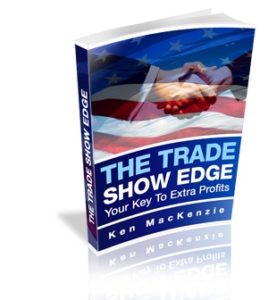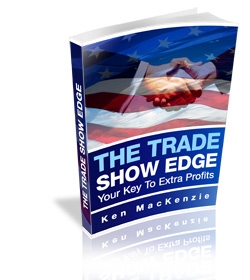Table of Contents
Trade Show Planning – Where are Your Likely Prospects ?
Welcome to our comprehensive guide on trade show planning, where we’ll explore the essential strategies and steps to ensure a successful outcome for your next trade show. Trade shows provide valuable opportunities to showcase your products, connect with potential customers, and expand your network within the industry.

However, effective planning is crucial to make the most of these events and achieve your desired goals.
In this article, we will cover various aspects of trade show planning, from setting goals and understanding your target audience to pre-show marketing strategies, booth design, lead generation, evaluation, post-show follow-up, budgeting, and industry trends.
Let’s dive in and discover how you can maximize your trade show presence and drive meaningful results.
Setting Goals and Objectives:
Clearly defining your goals and objectives is the foundation of successful trade show planning. Determine what you aim to achieve through your participation in the event. Whether it’s generating leads, increasing brand awareness, closing deals, or launching new products, make sure your goals are specific, measurable, attainable, relevant, and time-bound (SMART).
Identify the specific objectives you want to accomplish during the trade show. This can include collecting a certain number of leads, scheduling a certain number of meetings or demonstrations, or securing a specific amount of sales. Objectives provide clear direction and help you focus your efforts throughout the event.
Target Audience Research:
Understanding your target audience is key to designing a trade show strategy that resonates with them. Gather demographic information such as age, gender, profession, and location to develop a clearer picture of who your ideal customers are. This knowledge will guide your decisions on booth design, marketing materials, and engagement techniques.
Conduct market research to gain valuable insights into your target audience’s preferences, pain points, and motivations. This will enable you to tailor your messaging, promotions, and offerings to better meet their needs. Surveys, interviews, and social media monitoring are effective methods to gather this information.
Pre-Show Marketing Strategies:
Developing a comprehensive pre-show marketing plan is crucial to generate buzz and attract attendees to your booth. Utilize various marketing channels such as email marketing, social media, content marketing, and targeted advertising to create awareness and build anticipation for your participation in the trade show.
Leverage the power of storytelling to engage your audience and communicate the unique value proposition of your brand. Create compelling content that highlights what sets your products or services apart from the competition. Utilize teasers, behind-the-scenes footage, and exclusive offers to generate excitement and drive traffic to your booth.
Booth Design and Layout:
Designing an appealing and engaging booth is essential to capture the attention of trade show attendees. Invest in visually striking displays, banners, and signage that reflect your brand identity and create a memorable impression. Incorporate interactive elements, such as product demonstrations or virtual experiences, to encourage visitor engagement.
Optimize the booth layout to ensure smooth traffic flow and facilitate meaningful interactions. Create designated spaces for product displays, demonstrations, and one-on-one conversations. Consider the placement of key elements such as reception counters, seating areas, and interactive touchscreens to enhance the overall experience for visitors.
Staff Training and Preparation:
The success of your trade show presence heavily relies on your booth staff. Provide comprehensive training to ensure they possess in-depth product knowledge and can effectively communicate your brand’s value proposition. Train them on engaging conversation techniques, active listening, and objection handling.
Prepare your staff with strategies to engage and qualify leads effectively. Encourage them to ask open-ended questions, actively listen to
There’s a lot to do when undertaking trade show planning and one of the first steps in planning an exhibit program for your business is to determine which of the thousands of shows you intend to enter during the year.
Measuring Trade Show Success:
Evaluating the trade show’s success based on set goals and objectives.
Analyzing key metrics such as lead generation, sales conversions, and brand exposure.
Post-Show Follow-Up Strategies:
Developing a systematic approach for post-show lead nurturing.
Implementing effective follow-up tactics to convert leads into customers.
Budgeting and ROI Analysis:
Setting a realistic budget for the trade show.
Calculating return on investment (ROI) and assessing its effectiveness
Trade Show Trends and Innovations:
Exploring the latest trends and innovations in trade shows.
Highlighting emerging technologies and strategies for improved results.
 Of particular importance are the figures relating to attendance. For instance, how many visitors were important buying influences and what were the job functions they represented?
Of particular importance are the figures relating to attendance. For instance, how many visitors were important buying influences and what were the job functions they represented?
You must also be tough in your evaluation of a trade show’s worthiness.
Ask yourself: “Are the attendees likely customers for my organization?”
Know what industries contain your potential customers as well as what level and job functions are your buying influences.
Specialized trade shows usually have a higher percentage of likely prospects whereas the larger the show the more general will be its audience.
When trade show planning, don’t forget that your exposure to a few hundred very qualified targets is better than exposure to thousands of visitors who are very unlikely be interested in your products or services.

Products (and/or services) to be shown should be determined by referring to the expected attendance. If show management provides a breakdown by industry, this will give you an idea of what products to show at the trade show.
Valid visitor registration data is important in evaluating whether you should participate in a particular trade show. The number of people attending a trade show doesn’t mean as much as the quality of your prospects attending.
The better trade shows start running out of good space very quickly, so when doing your trade show planning don’t wait too long to book. This is especially important if you want to retain the preferred space you had at a previous show.
Commence your trade show planning at least 12 months in advance
You should commence your trade show planning at least 12 months in advance, but what your exhibit will feature and the objectives you want to achieve needn’t be set immediately. Which particular shows to participate in is not an easy decision to make. Plan to set up a booth, either on your own or with a key partner, if you wish to have a significance presence at a trade show.
Trade Show Planning Involves Defining Your Target Audience:
By thoroughly understanding your buyers (industry, title, geography, motivations, product need/usage, etc.) and how they make purchase decisions will enable you to select opportunistic trade shows that will yield profitable results.
Review all the trade shows you have attended in the past and remove from your list those that were disappointing. Of course, ensure that you keep those that were strong performers on your list.
Trade shows are an incredible opportunity to grow your business. Set yourself up for total success.
Here are some Frequently Asked Questions (FAQs) related to trade show planning:
Q: How far in advance should I start planning for a trade show?
It is recommended to start planning for a trade show at least six to twelve months in advance. This allows ample time for booth design, marketing preparations, and securing necessary resources.
Q: What are the key elements of a successful trade show booth?
A successful trade show booth should have an eye-catching design, clear branding, interactive displays, engaging product demonstrations, knowledgeable staff, and effective signage to attract and engage attendees.
Q: How can I attract more visitors to my trade show booth?
To attract more visitors, consider offering incentives such as giveaways, contests, or interactive experiences. Promote your booth through pre-show marketing, social media, and targeted invitations. Engage attendees with personalized interactions and compelling demonstrations.
Q: How do I measure the success of my trade show participation?
Measuring trade show success can be done by tracking metrics like the number of leads generated, sales conversions, brand exposure, customer feedback, and return on investment (ROI). Set specific goals before the event and evaluate your performance against those objectives.
Q: What are some cost-saving tips for trade show planning?
To save costs, consider sharing booth space or resources with complementary exhibitors, opting for cost-effective booth materials, using digital marketing tools for promotion, and negotiating discounts with vendors. Also, plan your logistics in advance to avoid rush fees.
You need to make thoughtful decisions about those trade shows that represent the best opportunities.
CLICK HERE to check out the Trade Show Planning Guide
TheTradeShowEdge.com is a participant in the Amazon Services LLC Associates Program, an affiliate advertising program designed to provide a means for sites to earn advertising fees by advertising and linking to Amazon.com.
Links on this trade show planning guide page are sponsored affiliate links and the owner makes a commission if you buy after clicking these links. The owner is not a bonafide user of a trade show planning guide. However, he has thoroughly researched it and provided a personal opinion only. This disclosure is in accordance with the Federal Trade Commission’s 16 CFR, Part 255: “Guides Concerning the Use of Endorsements and Testimonials in Advertising.”
Tagged with: trade show exhibitor checklist • trade show planning checklist • trade show planning guide
Filed under: Trade Show Articles

3 thoughts on “Definitive Trade Show Planning and Evaluation | A Guide to Success”
Comments are closed.